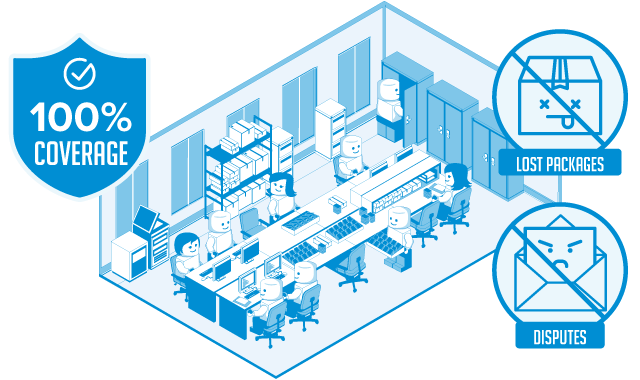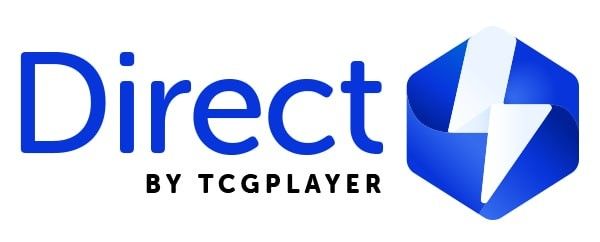One of the things that our ProTrader Discord excels at is helping each other maximize returns. I asked our members about how to use TCGPlayer effectively, helping people understand what TCG Direct is and why they may want to be part of that program.
I’ve edited the conversations and posts into more of a how-to guide. If you have questions, come to the General tab and ask away! People here are super helpful.
If you’re intent on reaching TCG Seller Level 4, which unlocks custom shipping options like ‘Free Shipping for all orders over $5’, then focus on flipping lots of EDH staples or other high-demand high-value cards. Note that your level is determined by how quickly you fill orders and your feedback rating.
Leveling up isn’t terribly difficult as long as you commit to one of three strategies: 1) put the effort into grading strictly 2) don’t do much grading or condition evaluation but accept that you’re going to take some hits along the way, including delays on your seller level 3) list your “NM” stuff at LP.
Once you have a high enough volume of sales (by value, not by number of cards sold) and a thoroughly stocked inventory, you can apply to become a TCG Direct store. This has many benefits, including:
1) Your TCG Direct sales get bundled into a single package you send to TCG. (saving you on postage AND time)
2) You don’t have to deal with ANY customer service issues for Direct sales. This is a huge time saver for you (i.e. not having to email with customers, do returns, etc.)
3) TCG Direct pricing tends to be anywhere from 5% to 30%+ higher than TCG Low. People pay for the convenience of a single package and the cart optimizer favors TCG Direct listings as well.
4) Your non-direct sales (as a Direct seller) will have slightly lower TCG fees than Level 4.
If you’re content to send just $20-$60 cards occasionally, you’re likely better off avoiding Direct.
Keep in mind that despite higher seller fees on a TCG Direct sale, the upsides more than make up for it.
While a TCG Direct seller, you must be strict with your grading. Be sure to check your cards with good lighting at all angles. For example: You have a card you think is a NM non-foil, with a tiny edge/corner ding or microscopic surface scratches. It should be fine, but they WILL ding you for mild surface issues or minor edge issues, especially before you get to Direct status. Better to be cautious in your grading, as buying a LP card and getting something with only a small ding feels pretty good. Buying something as NM and finding a ding that’s bigger than expected may end up being a return.
The penalty for sending in a card that’s graded to the wrong condition isn’t too terrible: they purchase a new copy on your behalf and charge you the higher of what you charged or what the new copy costs, so your net penalty is basically your fees. They send your misgraded cards back later, so if it’s a hot card, you might also lose out on an opportunity.
Because you’ve downgraded your items, or graded very strictly, you’re much less likely to get dinged on condition. Instead you’ll be making sure that your sales are executed as smoothly as possible.
Please note that you can get unexpected “normal” sales when TCG’s inventory runs out, as your direct listings fall temporarily to “nondirect” status. So you can’t completely avoid sending envelopes, and occasionally this results in having to ship a cheap card at a loss depending on your pricing and listing strategies.
When it comes to listing larger quantities of cards, one member suggests: “The ‘single package’ nature of TCG Direct makes it worth listing cheaper cards. Where you draw the line is up to you, but I personally price cards as low as 5c on TCGDirect because it’s more efficient for me to just inventory and list everything from my collection rather than trying to remember which cards are worth selling.”
Once you reach TCGDirect status, take note of their fee structures. Because of how TCG Direct fees work, you should generally never list a card in the $3 to $3.14 range or in the $20 to $22.42 range. You get charged fees that are higher than $2.99 or $19.99 if the card sells by itself.
Also, now that you’re a Direct seller, you want to adjust your pricing as it relates to the TCG Direct low, not the overall TCG Low. These are two different price indicators, and you should change these prices during your transition to TCG Direct. Specifically, reprice cards after you’re approved but before you confirm the change.
If you plan to apply for TCG Direct, note that TCG’s invoicing system orders cards by Condition, then by Set (generally newest to oldest standard sets, then supplemental sets), and finally Alphabetically. You can prepare for this as you build your inventory system and start sorting the same way.

Getting to TCGDirect status also unlocks the TCG Buylist. You can fund your buylist account with deductions from your payouts, or you can manually fund by talking to customer service. e.g. TCG holds your buylist money up front.
For TCG Buylist, you add cards similar to how you list cards for sale (i.e. by specific card, condition, price, and the quantity you’re willing to buy. Because TCG manages the inventory, cards always sell to the highest buylist price first, there’s no brand loyalty or any other way to accidentally get your lower buylist price to trigger until all higher prices are filled. Note that you can make a buylist as if you were a customer selling cards and see all of the open buylist offers from competitors. Checking manually can be worth it because sometimes there might be only one or two higher offers compared to yours. As a result, it may make more sense to lower your buylist offer to increase your chances of capturing a higher sale price.
For TCG Buylist the sellers that accept your offer will send cards directly to TCG. TCG will accept the shipments, grade them, and mark your buys as “confirmed” or not (e.g. condition not as advertised / seller didn’t ship) You can elect to pay postage once a month or on request. TCG will then ship you everything they’ve received up to that point . Buylisters should not expect a flood of cards all at once. Think of the Buylist as someone incrementally building up a collection for you.
TCG’s fee (in addition to postage) is a flat 10% of the buylist prices, with a minimum 10 cents per card. Please note that this fee may seem small but can really add up on the aggregate. Luckly, there are no taxes or other hidden fees.
Another thing to watch out for as a Buylister is that if a sale ends up being unconfirmed, your buy will immediately reopen, and you won’t be able to reduce the quantity requested. So say you ask for 10 copies of a card at $10 each, and get 10 buyers taking you up on it, you can’t adjust your “buylist” below 10 qty (and you’ll get no further buys at the time) but then if one of those copies “fails”, suddenly you’re back “on the hook” to buy another copy at $10. So you have to be on top of your buylist prices and make sure they’re prices you’re willing to pay even if it looks like you’re “fully sold”.
Some other quotes from our members about TCG’s Buylist feature:
“-The great thing about TCG Buylist is that if you have the best price, you’ll get the sale. Sellers cannot pick who to sell to, it defaults to the best price.
-You’ll get more hits on newer cards. Get your specs in early in the format. Older cards are very random crapshoots, but staples are reasonable odds. (anything someone would think “I should sell this to get some cash”)
– You need to decide whether you want to actively manage your prices and get into bidding wars, or pick a price you’re happy with and let the chips fall where they may.
– You will be charged to ship your purchases, and it happens automatically after a month of no POs. So you want at least enough quantity of buylist so you don’t pay $5 to be shipped one copy of Deathrite Shaman.
– In a similar vein, you’ll want to load up your withholding as you add more cards. When I go on a buylist spree I generally have to up my withholding to 100% for one or two payments to load in more cash. I’ve never had them directly deposit money but I know that’s also doable.”
“- remember that you will be charged 10% fee for each buylisted card, 10c minimum. (so price accordingly) But the shipping per PO is the only other meaningful cost. No tax. They’ll grade the cards as part of the process, and I’d say they’re 98% accurate but not perfect.
– I strongly recommend putting in a price for LP variants as well. You can often put in a lower price, and if someone sends in a NM card they deem LP, you might get a cheap auto-buy from the downgrade. Conversely, often people send in as LP to be safe and the cards are totally NM viable.”
One more member testimonial about their numbers for 2020:
“- TCG Direct fees were 26.5% of my total sales. (all fees divided by all sales, so bigger sales count more here)
– Fees on non-direct sales were 12.3%
– Adding in shipping costs, 17.9%
– Adding in materials costs as well, 18.4%
So TCG Direct all-in upfront cost is about 8% more expensive than a traditional non-TCG Direct sale. However,my Direct items regularly sell for at least 10% more than non-direct and often closer to 20%. The increased sale price and the time saved by using TCG Direct are huge.
Also note that the non-Direct sales would be +1.3% in fees if I wasn’t a direct seller, so if you’re doing a strict comparison to decide whether to make the jump, it’s 26.5% Direct vs. 19.7% Level 4.”
If there’s things that you’d like to contribute to this guide, drop into our Discord and let us know. This is by no means the definitive, all-encompassing guide, but the distillation of many members’ input and experiences.
Cliff (@WordOfCommander) has been writing for MTGPrice since 2013, and is an eager Commander player, Draft enthusiast, and Cube fanatic. A high school science teacher by day, he’s also the official substitute teacher of the MTG Fast Finance podcast. If you’re ever at a GP and you see a giant flashing ‘CUBE DRAFT’ sign, go over, say hi, and be ready to draft.


